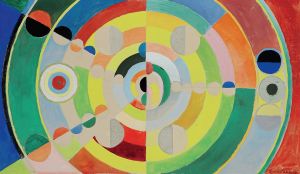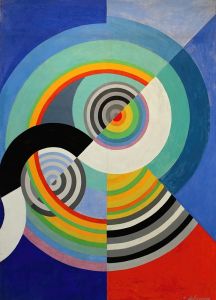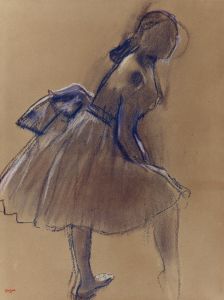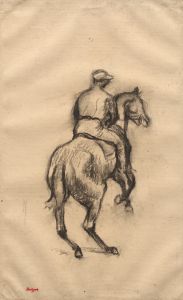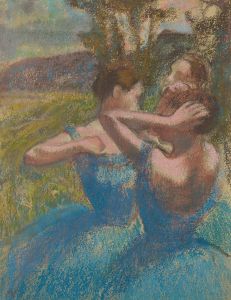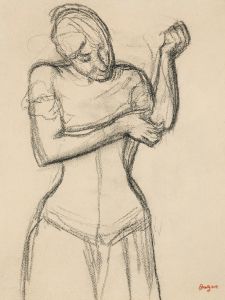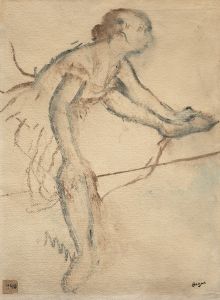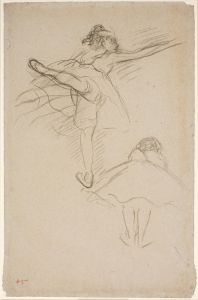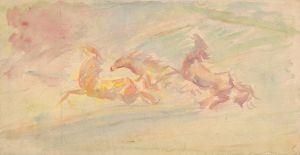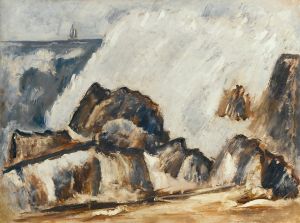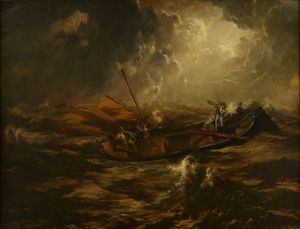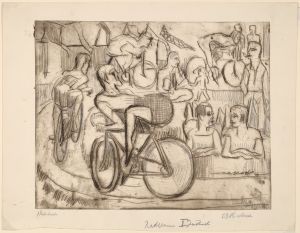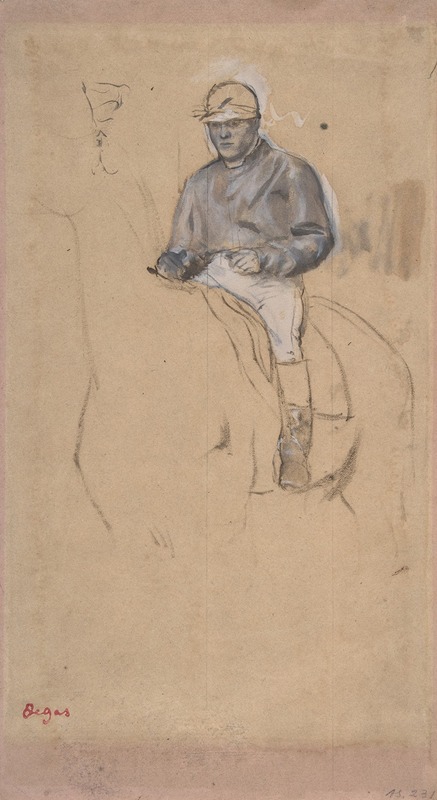
A Jockey on His Horse
A hand-painted replica of Edgar Degas’s masterpiece A Jockey on His Horse, meticulously crafted by professional artists to capture the true essence of the original. Each piece is created with museum-quality canvas and rare mineral pigments, carefully painted by experienced artists with delicate brushstrokes and rich, layered colors to perfectly recreate the texture of the original artwork. Unlike machine-printed reproductions, this hand-painted version brings the painting to life, infused with the artist’s emotions and skill in every stroke. Whether for personal collection or home decoration, it instantly elevates the artistic atmosphere of any space.
Edgar Degas, a prominent French artist known for his contributions to Impressionism, created the painting "A Jockey on His Horse" during the late 19th century. Degas, whose full name was Hilaire-Germain-Edgar De Gas, was born on July 19, 1834, in Paris, France, and became renowned for his works that often depicted scenes of contemporary life, including ballet dancers, women at work, and horse racing.
"A Jockey on His Horse" is one of Degas's many works that explore the theme of horse racing, a subject that fascinated him throughout his career. Degas's interest in horse racing was part of a broader fascination with movement and the dynamics of modern life. This painting, like many of his equestrian works, captures the energy and elegance of the sport.
Degas's approach to painting horses and jockeys was influenced by his desire to depict movement and the fleeting moments of action. He was known for his innovative use of perspective and composition, often capturing his subjects from unusual angles or in moments of transition. This approach can be seen in "A Jockey on His Horse," where the horse and rider are depicted with a sense of immediacy and vitality.
The painting is characterized by Degas's use of bold brushstrokes and a vibrant color palette, which contribute to the dynamic quality of the scene. Degas often employed pastels in his equestrian works, a medium that allowed him to achieve a rich texture and depth of color. His technique involved layering colors to create a sense of movement and light, which is evident in the depiction of the horse's musculature and the jockey's attire.
Degas's equestrian paintings, including "A Jockey on His Horse," reflect his interest in the scientific study of movement. He was influenced by the work of photographers like Eadweard Muybridge, whose sequential photographs of animals in motion provided new insights into the mechanics of movement. Degas's paintings often capture the tension and grace of horses in motion, reflecting his keen observation and understanding of anatomy.
Throughout his career, Degas produced numerous works featuring horses and jockeys, both in paintings and sculptures. These works were well-received by his contemporaries and continue to be celebrated for their dynamic composition and innovative use of color and form. "A Jockey on His Horse" exemplifies Degas's ability to convey the excitement and elegance of horse racing, a theme that resonated with the modernity and energy of Parisian life during his time.
Degas's legacy as an artist is marked by his ability to capture the essence of movement and the subtleties of human and animal form. His equestrian paintings remain an important part of his oeuvre, showcasing his skill in rendering the complexities of motion and his dedication to exploring new artistic techniques. "A Jockey on His Horse" stands as a testament to Degas's enduring fascination with the world of horse racing and his mastery of capturing the dynamism of life in his art.





